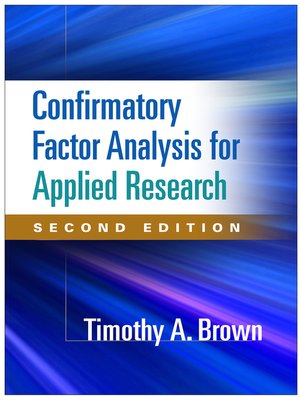Confirmatory Factor Analysis for Applied Research
ebook ∣ Methodology in the Social Sciences Series
By Timothy A. Brown

Sign up to save your library
With an OverDrive account, you can save your favorite libraries for at-a-glance information about availability. Find out more about OverDrive accounts.
Find this title in Libby, the library reading app by OverDrive.



Search for a digital library with this title
Title found at these libraries:
| Library Name | Distance |
|---|---|
| Loading... |
With its emphasis on practical and conceptual aspects, rather than mathematics or formulas, this accessible book has established itself as the go-to resource on confirmatory factor analysis (CFA). Detailed, worked-through examples drawn from psychology, management, and sociology studies illustrate the procedures, pitfalls, and extensions of CFA methodology. The text shows how to formulate, program, and interpret CFA models using popular latent variable software packages (LISREL, Mplus, EQS, SAS/CALIS); understand the similarities and differences between CFA and exploratory factor analysis (EFA); and report results from a CFA study. It is filled with useful advice and tables that outline the procedures. The companion website (www.guilford.com/brown3-materials) offers data and program syntax files for most of the research examples, as well as links to CFA-related resources.
New to This Edition
*Updated throughout to incorporate important developments in latent variable modeling.
*Chapter on Bayesian CFA and multilevel measurement models.
*Addresses new topics (with examples): exploratory structural equation modeling, bifactor analysis, measurement invariance evaluation with categorical indicators, and a new method for scaling latent variables.
*Utilizes the latest versions of major latent variable software packages.
New to This Edition
*Updated throughout to incorporate important developments in latent variable modeling.
*Chapter on Bayesian CFA and multilevel measurement models.
*Addresses new topics (with examples): exploratory structural equation modeling, bifactor analysis, measurement invariance evaluation with categorical indicators, and a new method for scaling latent variables.
*Utilizes the latest versions of major latent variable software packages.







